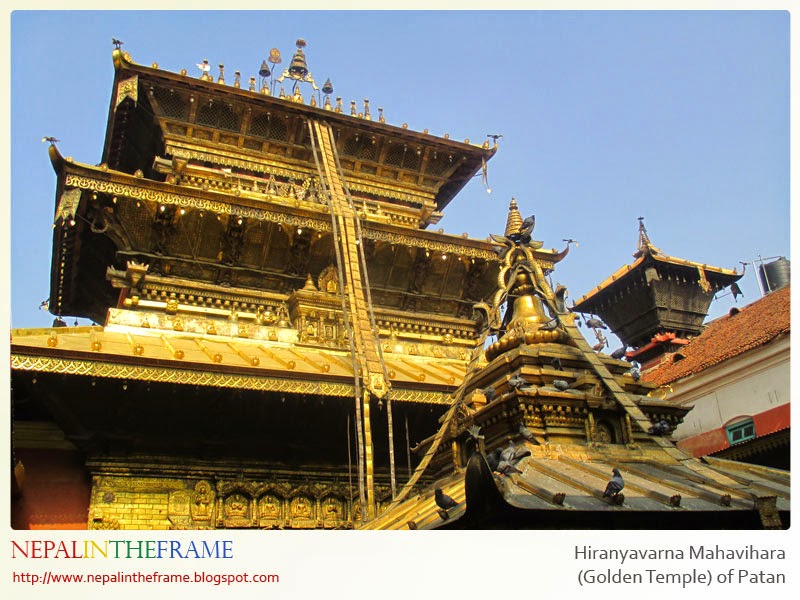Once upon a time there lived a merchant in Itumbahal of Kathmandu. His name was Kesha Chandra. He was a gambler. He would gamble everyday. But one day, he lost everything.
After losing everything, he went to his elder sister who was very rich. She cooked a delicious meal for her brother and served it on a gold plate. After having the meal, Kesha Chandra waited for the moment for his sister to be out of sight. As soon as his sister went outside, slid the gold plate into his cloak and secretly left the house. He went back to gamble. Unfortunately, he lost the golden plate.
Kesha Chandra had no one to go to. So, he visited his sister again. His forgiving sister prepared a delicious meal for him. This time she served it in a brass plate. He immediately ate up everything, took the big brass plate and sneaked out of the house. Kesha Chandra couldn't resist the temptation to gamble. This time again, he lost.
A looser, he shamelessly went back to his sister's house. This time his sister served his meal on the floor. Kesha Chandra didn't eat the food because he thought it was an insult. He collected the food in a sheet of cloth, made it into a bundle and set off to throw away.
He took the road to Swoyambhu. When he had walked for someone, he became tired. Sho, he laid the bundle and sat down to rest under a tree. He felt very guilty for his habit of gambling. He fell asleep under the tree. There were many pigeons on the branches above. When they saw that Kesha Chandra was asleep they flew down and started picking at the bundle of rice. In no time, they finished the rice and flew up to the branches.As soon as they perched on the branches, the pigeons started dropping gold balls. Kesha Chandra woke up starled. He was surprised to see the gold balls. There were many of them. He collected all the bold balls. Then he tied them up into the bundle.
He tried to lift bug he couldn't. Kesha Chandra did not know what to do. Suddenly, he saw a giant approaching him. It was Guru Mapa. The giant stretched out his hands to catch him. "Finally, I have found my breakfast." he roared. Kesha Chandra was clever. He greeted the giant. "Guru Mapa, you cannot fill your big belly with a puny creature like me. Please come to my house instead. I will serve you a buffalo and two tons of rice." said Kesha Chandra. Then he pointed to the bundle of golden balls and said, "If you don't believe take this bundle of gold balls. You can return it to me after you are satisfied". "All right then, after you," said the giant. He lifted the bundle on his shoulder and followed Kesha Chandra.
As promised, Kesha Chandra served him a buffalo and two tons of cooked rice. Guru Mapa ate every thing and slept for three days. As soon as he got up, he asked for more food. Kesha Chandra had to arrange a buffalo and two tons of rice for him again. He said, "Guru Mapa, eat and sleep peacefully".
This routine of eating, sleeping and waking up carried on for a long time. Kesha Chandra had to some how arrange for his regural food. One day, Kesha Chandra's neighbours complained that the giant should not be kept in the house. The children were scared of the giant. Then, Kesha Chandra took Guru Mapa to Tudikhel and hid him on a tree behind the leaves. Guru Mapa sometimes went to the town and took away the children. Whenever the children used to weep and cause trouble, the parents told them that Guru Mapa would take them away. The parents became ansious of the situation. They pulled the giant from the tree too the ground and hit him hard to kill him. But nothing happened to the giant. He would stand up and walk again. There was only one way out. They had to make horses stampede the giant to kill him. The plan worked out. The people made horses to run over Guru Mapa. Finally, the giant was killed. To remember the trouble that the giant had caused and not to repeat a similar incident, people arrange Ghode Jatra at the Tudikhel ground every year.
















